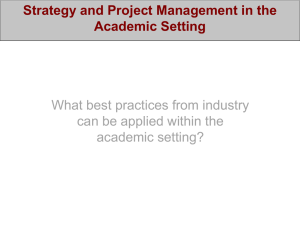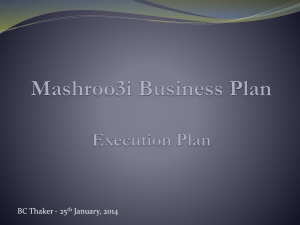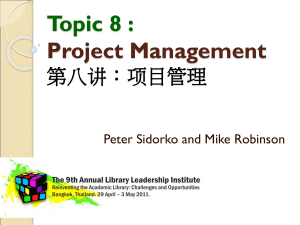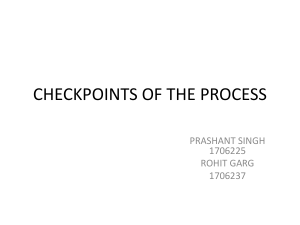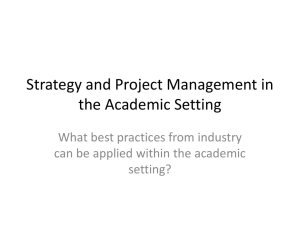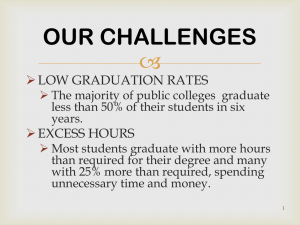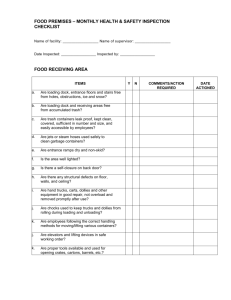LEADING AND MANAGING CHANGE Change Management
advertisement
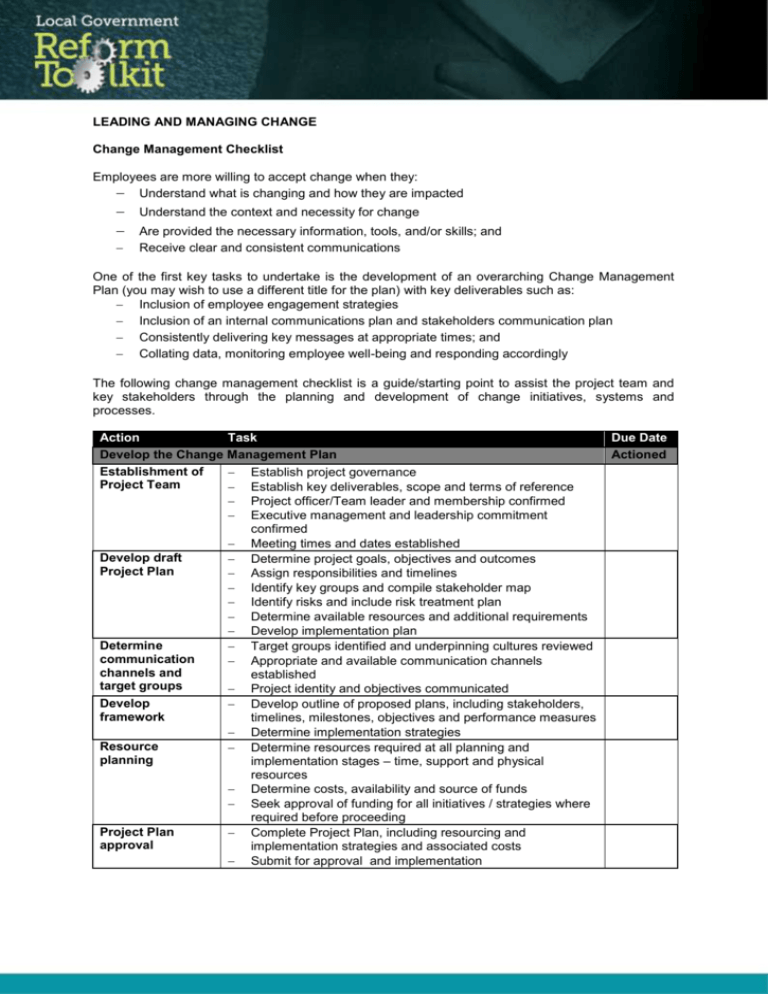
LEADING AND MANAGING CHANGE Change Management Checklist Employees are more willing to accept change when they: Understand what is changing and how they are impacted Understand the context and necessity for change Are provided the necessary information, tools, and/or skills; and Receive clear and consistent communications One of the first key tasks to undertake is the development of an overarching Change Management Plan (you may wish to use a different title for the plan) with key deliverables such as: Inclusion of employee engagement strategies Inclusion of an internal communications plan and stakeholders communication plan Consistently delivering key messages at appropriate times; and Collating data, monitoring employee well-being and responding accordingly The following change management checklist is a guide/starting point to assist the project team and key stakeholders through the planning and development of change initiatives, systems and processes. Action Task Develop the Change Management Plan Establishment of Establish project governance Project Team Establish key deliverables, scope and terms of reference Project officer/Team leader and membership confirmed Executive management and leadership commitment confirmed Meeting times and dates established Develop draft Determine project goals, objectives and outcomes Project Plan Assign responsibilities and timelines Identify key groups and compile stakeholder map Identify risks and include risk treatment plan Determine available resources and additional requirements Develop implementation plan Determine Target groups identified and underpinning cultures reviewed communication Appropriate and available communication channels channels and established target groups Project identity and objectives communicated Develop Develop outline of proposed plans, including stakeholders, framework timelines, milestones, objectives and performance measures Determine implementation strategies Resource Determine resources required at all planning and planning implementation stages – time, support and physical resources Determine costs, availability and source of funds Seek approval of funding for all initiatives / strategies where required before proceeding Project Plan Complete Project Plan, including resourcing and approval implementation strategies and associated costs Submit for approval and implementation Due Date Actioned Strategy and Resources Develop Assign responsibility for each plan according to skillsets Communications (seconding additional skills as required) Strategy Identify key messages and critical milestone timelines Develop information resources in appropriate formats for inclusion of all staff and stakeholders Develop surveys or other relevant two way communication resources Develop strategy to track and monitor all communication interactions to leverage multiple communication channels and reduce duplication and information overload Develop effectiveness indicators and performance measures Manage the change Engage and Consult and engage with stakeholder or target groups to Consult establish baseline information and determine readiness for change Develop peer Identify change champions and establish a change network support strategies to formalise peer to peer information sharing and support communications strategies Respond to Address issues arising from results of feedback and issues arising consultation by reporting issues that may affect change progress, ownership and involvement, stakeholder relationships, staff retention and staff wellbeing Recording and Ensure all people and culture activities are formally recorded reporting and regular reports on progress are provided to key stakeholders Managing the culture Desired culture Determine desired values, behaviours, and culture of new entity Current cultures Identify key attributes, strengths and weaknesses of existing workplace cultures of the amalgamating councils and workgroups Risk management Determine strategies to respond to identified culture blending risks and constraints Culture blending Develop strategies to build and nurture a new team culture and dynamics – Example 1: develop strategies by encouraging the practice of providing opportunities for peer functional groups and teams to meet and discuss common issues and direction. Example 2: Corporate values strategy Social interaction Encourage social interaction across entities, including formal milestone celebrations or functions and recognition for past achievements and effort –this includes elected members Recognition Develop a new entity launch event for all amalgamating LG’s and include previous elected members, CEO, employees, new Commissioner (if applicable) etc. Ensure elected members and CEO are acknowledged for their past contribution and commitment Monitor and Review Project progress Measure and report progress against timelines and budget Reform Monitor changes to timelines or direction of the reform progression process and communicate appropriately to staff, key stakeholders and other working groups Actioned Actioned Actioned Actioned Rate of change Risk factors Employee satisfaction Communication effectiveness Monitor rate of progress or level of resistance at key milestones Review risk strategies and the impact upon key milestones Review results of employee surveys conducted at six monthly intervals or key milestone dates if changes occur to reform timeline Review effectiveness of communication channels, materials and access to information at key milestones or when issues arise Checklist – Leading and Managing Change | Page 4


